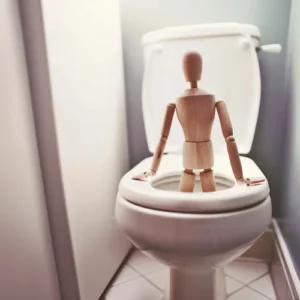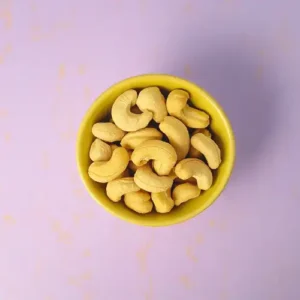If you’ve enjoyed a night of heavy drinking, your blood alcohol content (BAC) could still be over the legal limit for driving the next morning. Read about how you can be safe …. and not sorry!
Unwittingly Risky
The UK road safety charity Brake has found that approximately 20% of drivers admit to having driven the morning after a night of heavy drinking. Also, a Freedom of Information request filed by insurers LV revealed that drunk driving arrests in the early morning hours between 06:00 and 08:00 rose 4% between 2011 and 2012, from 350 to 363. Worrying statistics!
The Morning After Effect
Many people underestimate the lingering effects of alcohol the day after heavy drinking. Even if you’ve slept for 8 hours, you may still be impaired. Alcohol can continue to affect your brain and body for up to 24 hours after your last drink. During this time, you may experience symptoms like headache, fatigue, nausea, sensitivity to light and sound, and difficulty concentrating.
These hangover effects can severely impact your ability to drive safely. Your reaction time, coordination, attention, and judgement may be compromised without you fully realising it. Driving in this state puts you at serious risk of causing an accident and harming yourself or others. It’s crucial to allow ample time for the alcohol to completely clear your system before getting behind the wheel.
More people are avoiding driving right after drinking, but many of them are still driving in the morning, not realising that they may not have given themselves enough time to metabolise the alcohol they consumed.
It seems that people misunderstand how the body metabolises alcohol. Specifically, they don’t understand that sleeping does not accelerate alcohol metabolism.
Drivers who would never even dream of driving home from the pub after a few drinks either fail to understand, or choose to ignore, the fact that alcohol may still be affecting them the morning after. Those who drink heavily need to understand the effects of alcohol and how it is metabolised, and use alternative transportation after a night of heavy drinking.
Sleeping It Off?
Whether you are sober enough to drive in the morning depends on both how much you had to drink the night before, and how much time elapsed between drinking and getting behind the wheel.
How much alcohol is still in your bloodstream depends on how much you consume, and the time frame.
The general rule of thumb is that approximately a unit of alcohol is metabolised every hour, but this is just an average. Factors such as your gender, size, whether you drank on an empty stomach, your metabolism, and your liver health all influence how quickly your body processes alcohol. Still, you need to allow at least an hour per unit of alcohol before you decide to drive.
Think about it like this. You’ve been out drinking until 3 or 4am and roll out of bed at 7 or 8am. That’s only enough time to process 3 or 4 extra units of alcohol. This is fine if your night of drinking involved just a little more than a drink an hour, but this isn’t the norm. If you drank significantly more, you will still have several units of alcohol in your bloodstream when you get up in the morning, and could still be legally drunk.
Accelerating The Process – It Can’t Be Done
As your body metabolises alcohol, there are a number of processes in play. Most importantly, enzymes in your liver begin breaking down the alcohol. For this to happen efficiently, your liver needs to be healthy and functioning properly.
This process cannot be sped up. Drinking a cup of hot black coffee or taking a cold shower might help you feel more awake and alert, but they do nothing to actually remove alcohol from your bloodstream any faster.
Alcohol Units
To determine whether it is safe for you to drive the morning after a night of drinking, you need to figure both how much you had to drink, and over what time frame, both when you started and when you stopped.
How much alcohol you drink isn’t as simple as counting drinks. Some ales contain 3.5% alcohol, but some can be as high as 5% or even 6%. Wines can range from 8-15%. This unit calculator can help you figure out how many units of alcohol are in your favourite alcoholic beverages.
There is really no guaranteed way to ensure that you have fully metabolised all of the alcohol you’ve had, so play it safe. If you are under the influence of even a little bit of alcohol, your judgement, reflexes, and hand-eye coordination, all skills critical to safe driving, are impaired, making you more vulnerable to an accident.
Not only do you not want to deal with the consequences of being arrested for driving drunk, you don’t want to put your life or the lives of others at risk.
Drinking When You Know You’re Going To Drive In The Morning
If you want to drink, but you know you’re going to be driving in the morning, keep these tips in mind:
- Keep risk guidelines in mind while drinking
- Choose drinks with lower alcohol contents. Look for beers containing 4% or less by volume (ABV), wines containing 12% or lower, and skip the double measures of spirits.
- Alternate alcoholic beverages with water or non-alcoholic drinks.
- Stop drinking early to give your body plenty of times to process the alcohol before you need to do drive or do anything else requiring you to function well.
- If you must drive early in the morning, test yourself before your set off with one one of our approved disposable breath alcohol detectors (see below)
Know Your Limits
In addition to waiting sufficient time after drinking, it’s wise to be mindful of how much you consume in the first place. Binge drinking, defined as 4 or more drinks for women and 5 or more for men within about 2 hours, will drastically increase your BAC and require much more time to sober up completely the next day. Pace yourself, stay hydrated with water, and don’t exceed moderate drinking levels to avoid being in a risky situation the following morning. A little restraint while imbibing can prevent a lot of regret and danger later on.
Disposable Breath Alcohol Detectors
A recent innovation has been the appearance of disposable breath alcohol detectors on the market. These are basically pocket breathalysers that you use just once to check your alcohol levels. Results appear in less than two minutes and once the reading has been taken the test kit can be disposed of in normal rubbish.
Disposable breath alcohol detectors will estimate your blood alcohol content (BAC) from a single breath sample.
BAC is a measure of the amount of alcohol you have in your system in grams of alcohol per 100 millilitres of blood. A BAC of 0.05 means you have 0.05 grams (50 milligrams) of alcohol in every 100 millilitres of blood.
At Zoom Health we currently sell disposable breath alcohol detectors that work at three different levels of sensitivity;
– 0.02% BAC – this level is for zero tolerance testing of alcohol usage
– 0.05% BAC – this is the drink driving limit in Scotland and many European countries
– 0.08% BAC – this is the legal limit for driving in England and Wales.
Disposable breath alcohol detectors can be kept in your pocket, bag or purse. Or even in the glove compartment of your car. Next time you want to drive but are worried that you may still be over the limit, take a test. You will be looking after yourself and others and will feel better knowing rather than taking a huge and risky chance!
(For bulk price on disposable breath alcohol detectors, please contact us.)
Photo “How to Tell Whether It’s Safe to Drive the Morning After Drinking” by Anthony Cunningham for Zoom Health
Zoom Health is a leading UK supplier of Home Health Tests and Earplugs





